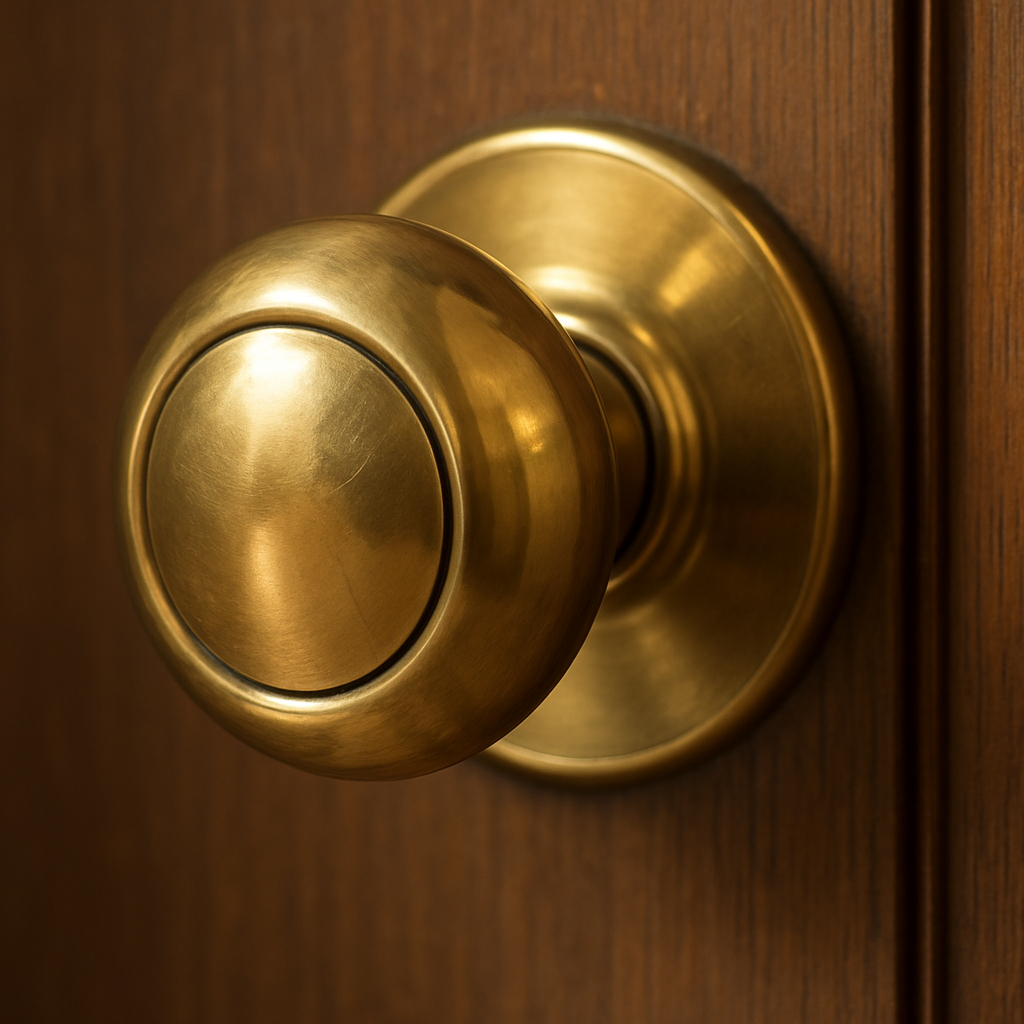
Brass breaks the rules
Share
Ordinary brass of the sort used in the majority of household applications, from doorknobs and hinges, to kitchen and bathroom taps, usually contains around 2-4% lead. The lead is added to make the brass easier to work with, which keeps costs down. Bronze is the same. 'Vintage' brass items can contain a lot more.
The lead is bound up with the copper and zinc or tin in the brass/bronze alloy - does that make it safe?
In our opinion, no. Items which are touched on a regular basis – doorknobs, cabinet knobs and light switches are primary culprits – visibly wear away at the surface over time, releasing particles on to the fingertips. Would you want your child touching pure lead 2-4% of the times they open a door? The effect is equivalent. Most keys are manufactured from brass - this is the primary reason you should never let a child put a key in their mouth.
Unfortunately I cannot find a single study examining the risks posed by brass (unless you count this small investigation of elevated BLLs in locksmiths) so we can only go by caution and common sense.
The EU/UK has some legislation to protect consumers from lead in metal alloys: REACH requires that anything capable of being mouthed by children (a door handle would qualify, but a knob not necessarily) contain no more than 0.05% lead by weight. Great! But – oh no! – the legislation includes an exception for copper alloys (i.e. brass) if provided with a protective coating. OK, a protective coating sounds fine...It isn't: the coating is required to last for only two years, a fraction of the lifespan of the typical hardware item. RoHS places a limit of 0.1% by weight on all electrical components but we find the same exception for copper alloys. These exceptions are clearly not dictated by health requirements, but by those of industry.
Legislation on the subject of lead in brass should not encourage us that those items are safe - rather, the fact that brass is excepted from the usual rules should convince us of the opposite.
For some reason, many people find it easier to believe that lead is leached out of brass taps. The UK poses a legal limit on such leaching of 10 mcg/L - this is the same as the legal limit on lead permitted in tapwater supplied before the tap. Both limits are too high by themselves, but with both tap and water supply at the upper level of permissible limits one would end up with a dose double the maximum envisioned. Again, the legal limits have been set based on what allows the industry to continue to function, not based on what makes sense for health.
The answer is to use stainless steel or wood where you would normally use brass. Where aesthetic considerations demand brass, search out PVD (physical vapour deposition) brass finishes - these provide a relatively lasting, durable barrier over the lead beneath. Avoid lacquered and electroplated finishes, which wear away quickly, if the substrate is brass. Electroplated brass on a stainless steel substrate is normally fine, as the brass used for electroplating is of a different composition and would not normally have lead added.
